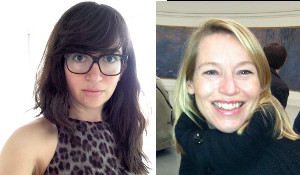Cloud Frames
This paper examines tensions between conceptual and phenomenological access to the Earth’s atmosphere and clouds by examining two artworks that critically engage issues of climate change and environmental disaster, Amy Balkin’s “Public Smog” (2004-Present) and Charles Stankievech’s “LOVELAND” (2011). We aim to articulate how contemporary artistic practices reflect and mediate between notions of clouds as both environmental phenomena and data infrastructures. By purchasing carbon gas emission credits and thereby making them inaccessible to trading markets Balkin seeks to institutionalize fractions of the Earth’s atmosphere as public ‘clean air parks’. Her project also involves an ongoing effort to have the Earth’s atmosphere included on the UNESCO World Heritage List. The implicit irony of Public Smog is that the atmosphere itself is indivisible; pollution transcends geographical, financial and political boundaries, and as such the idea of a clean-air park is non-realisable. However, in current climate policy the atmosphere with its gasses, clouds and particulate matter is quantified and made accessible primarily as data points, through air quality forecasts and levels of emissions bought, sold and traded. In working within and against the legal, financial and conceptual mechanisms through which the air spaces of Public Smog are defined Balkin is less concerned with making atmospheric conditions experientially accessible than with critiquing the institutions and knowledge infrastructures through which they are quantified and regulated. By contrast, in Stankievech’s looping video installation an explosion of purple smoke sweeps over the Arctic horizon to engulf the viewer in a boundless cloud of color and sound that is at once ominous and mesmerizing, dramatizing a phenomenological dimension of clouds that Balkin’s work conspicuously evacuates. Our analysis explores how the aesthetic manipulation of the boundaries of clouds, atmospheric spaces and their molecular contents help us to integrate disparate dimensions of climatic knowledge, experience and action.
Dehlia Hannah is a Postdoctoral Fellow at the University of Wisconsin Milwaukee’s Center for 21st Century Studies. She recently received her Ph.D. in Philosophy from Columbia University. Her dissertation, Performative Experiments: Case Studies in the Philosophy of Art, Science and Technology explored the philosophical implications of contemporary artworks that take the form of scientific experiments and her current research focuses on art and climate change.
Anne Sophie Witzke is a PhD fellow at Information Science, The Department of Aesthetics and Communication, Aarhus University. She is doing research on digital art and air and atmospheric issues. More specifically she investigates how digital artists explore the complex terrain of air, by bringing into play material, technological and political aspects of air. Anne Sophie is also a curator, and has been managing and co-curating the Nordic exhibition “RETHINK – Contemporary Art and Climate Change” featuring 25 internationally reknowned contemporary artists. She is currently part of the team behind LAGI2014: http://landartgenerator.org/competition2014.html
Email: inmvasw@hum.au.dk
